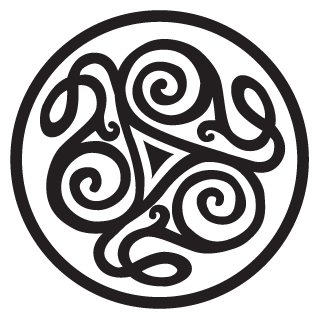What is creativity?
Creativity as Shapeshifter
Creativity is a mysterious shape-shifting (...process? energy? entity?) that expresses itself through an infinite multitude of manifestations. I once read that there are over a hundred words for snow in Eskimo languages. Do we need a similarly expansive language to describe all the different forms of creativity?
“There is always something new and something different.”
In his book, The Theory, History and Practice of Creativity, Rob Pope suggests that every human action may have a creative underpinning, using play-theory and language creation as examples that support this idea. Quoting physicists David Bohm and David Peat, he emphasises the fluid nature of creativity and the variety of ways it can be explored - “there is always something more and something different”. Whatever the form, creative energy seems to have an innate urge to provoke change and evolution.
The Materialist Paradigm vs an Expansive View
Despite the inherently fluid nature of creativity, it is often viewed through a materialist lens. Rob Pope draws attention to how typical descriptions of creativity centre around the idea of novelty or originality, pointing out that this is primarily a Western concept. In Eastern thought, there is more room for a transpersonal concept of creativity. Equally, in the ancient West, the idea of inspiration and creativity arriving from a force beyond the individual was accepted. From this expansive viewpoint, creativity can be considered as a dialogue and a way of connecting to deeper or higher sources. One question, perhaps impossible to answer, is who or what might we be connecting with? Creativity operates on multiple levels from functional to spiritual. Different levels and states of engagement are possible; brain communication leading to insight, a portal into deeper levels of own psyche or Self, a connection with another (perhaps divine) source of wisdom.
Automatism and Creativity
“Profound meaning often lies in a childish game.”
Artists such as Salvador Dali, André Breton, and Rene Magritte developed exercises with the intention of gaining access to the subconscious mind. This type of automatic process, which moves us beyond linearity, often seems to create pathways to deeper levels of the unconscious, beyond the personal. In other words, the output is not always solely influenced by our own local mind, but may tap into larger influences. From a Jungian perspective, this would be the collective unconscious.
Tucked inside my copy of A Book of Surrealist Games are a couple of pieces of paper with a writing exercise my younger brother and I tried, on a car journey almost twenty-five years ago. The idea of this exercise is that one person writes the start of a sentence, then folds over the paper so it is hidden. The other person concludes the sentence without knowing anything about what they are responding to.
I have treasured these scrappy pieces of paper for over two decades because, although the results were definitely surreal, I was struck by the unexpected connections and metaphorical depth of what emerged. To me, this confirmed that stepping out from the logical, discursive mind can provide access to a deeper awareness, and that creative exercises can mediate this connection. In this case, not only individually but also interpersonally, leading to questions about how psi phenomena, such as telepathy, and creativity may be connected. By tapping into creative energy, and allowing it to flow, we open ourselves to the unexpected and can become immersed in a shared field with something ineffable.
References
Gooding, M. (1991). A Book of Surrealist Games. Redstone Press.
Pope, R. (2005). Creativity: Theory, History and Practice. Psychology Press.
Rocke, A. (2010). Image and reality Kekulé, Kopp, and the scientific imagination. University of Chicago Press

